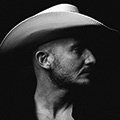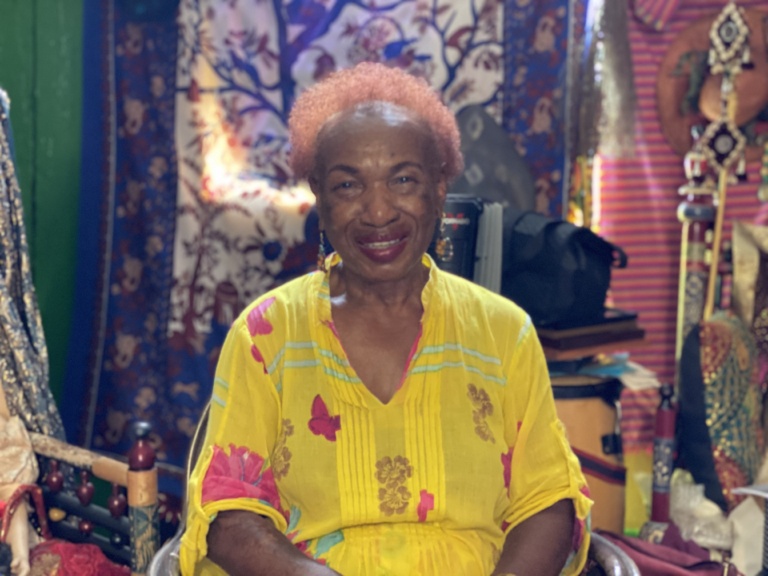There is no city in the Western world more associated with occultism than New Orleans. It is the capital of voodoo, magic, and spirits. Voodoo arrived in Louisiana with the hundreds of thousands of slaves brought from West Africa. Strange traditions of this religion also seeped into New Orleans from Haiti. The first slaves arrived there as early as the beginning of the 16th century, and their rituals evolved over the centuries in their own direction. We present an excerpt from Artur Owczarski’s book, Louisiana Gumbo.
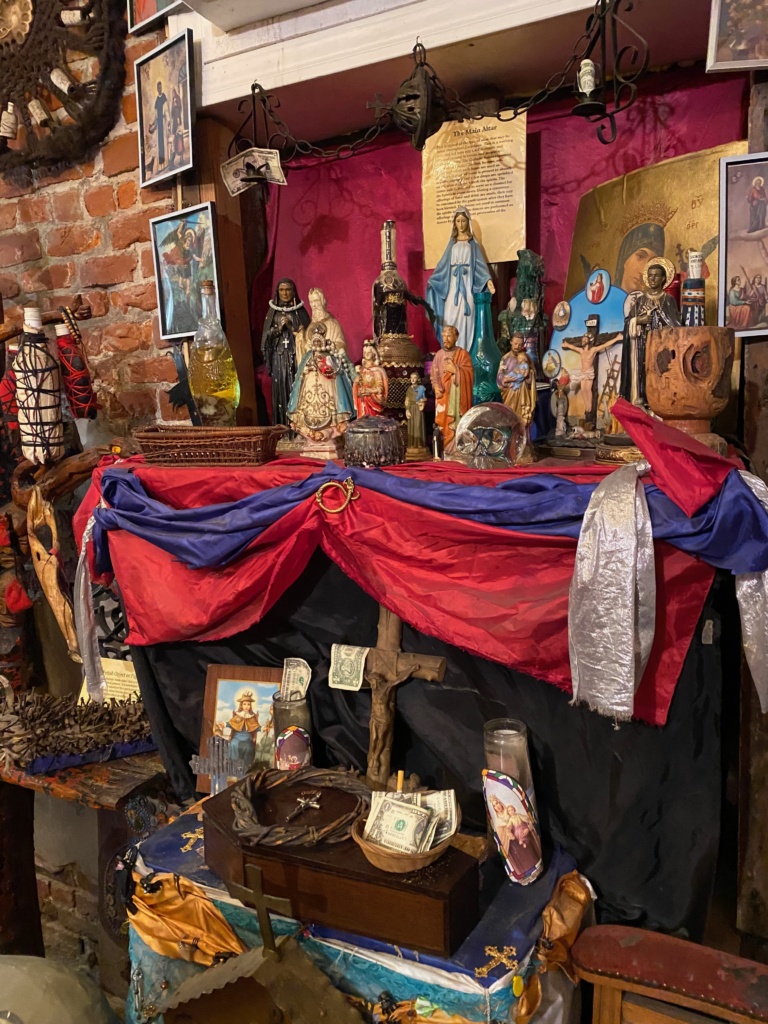
The word “voodoo,” this religion and its rituals, have long instilled fear in the white inhabitants of Louisiana. This was mainly due to the misunderstanding of the rituals, their animistic nature, full of references to death and the divine symbols that existed within them, which in Christian culture are associated with the devil (such as snakes). Voodoo was officially banned. According to the Black Codes, the only permitted religion in the colony was Catholicism.
Taking away the slaves’ faith was one of the ways to strip them of their identity.
If you don’t have your own religion, if you have been deprived of the right to speak your tribal language, forced to speak French, forget your ancestors, and have no one to tell you about them, if you don’t know where you come from, then you lose your identity. It becomes easier to rule over you, because you become no one—an entity without history, culture, tradition, and will. Over time, you accept being treated as an object.
On the plantations, voodoo was forbidden, and the rituals and meetings of its followers were impossible. The tradition was passed on orally, and as a result, in many regions, and even on neighboring plantations, it took on different forms. This gave rise to hoodoo, filled with magic, spell-casting, and occultism. The lack of written rules and contact with the outside world led people to create their own practices, rituals, and charms.
Hoodoo was folk-based, sometimes terrifying. For example, it was believed that one could take control of another person by casting a spell on them. Voodoo, on the other hand, is a monotheistic system focused on healing oneself and others. Its followers worship one God, a benevolent spirit. It is a religion in which the devil does not exist. Today, it is widely practiced in many countries around the world, especially in Haiti and Benin.
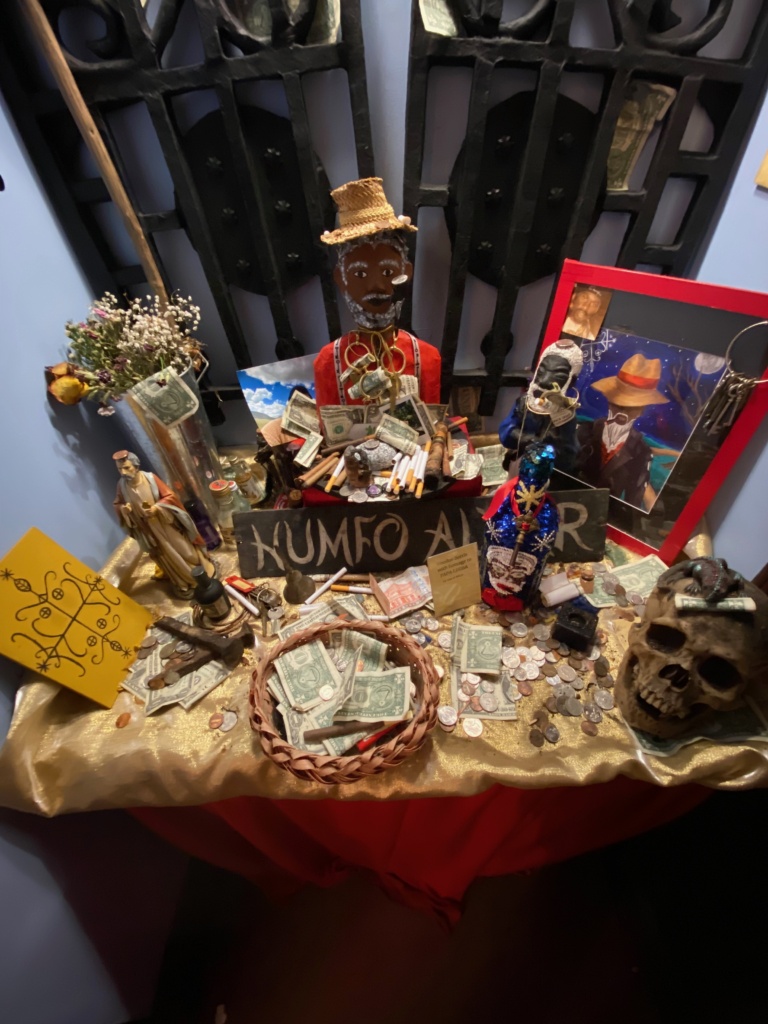
Both in voodoo and in hoodoo, there are so-called root doctors, healers. They perform spells that help patients regain their health or lost luck. Root doctors use herbs and prepare healing infusions for this purpose. They are healers of both the soul and the body. For centuries, they served as doctors for slaves and later for Black communities.
Lady of Częstochowa — the image of a voodoo goddess

Due to the ban on practicing any religion other than Christianity, followers of voodoo assimilated the symbols of the religion of white people. By integrating the rituals and saints of Catholicism with voodoo, they hid their true beliefs, especially on the plantations. Over time, figurines depicting Catholic saints, as well as the Virgin Mary and Christ, became elements of voodoo. They are “spirits,” “ancestors,” to whom one can turn for help. Voodoo, by its nature, remains open to integration with other religions to this day. Beliefs from continents other than Africa that permeated into New Orleans continuously supplemented the rituals and ceremonies. New Orleans voodoo is a mix of African beliefs, folk European traditions, Judaism, spirituality and herbalism of Native Americans, and Catholicism. Followers themselves decide which elements to include in their practices.
New Orleans voodoo also holds an important place for Polish culture, specifically for Our Lady of Częstochowa.
How did the Black Madonna of Jasna Góra first end up in Haiti and then in New Orleans?
In Saint-Domingue (the French colony in Haiti that existed from 1659 to 1804), the image of the Virgin Mary appeared with the Polish legionaries. Napoleon sent them to the Caribbean island to suppress the slave revolt. The Haitian Revolution broke out in 1790. Its immediate cause was news from revolutionary France about the National Assembly passing laws granting equal rights to all residents of the colony. However, plantation owners had no intention of respecting these decisions, and they ignored the ideas promoted by the leaders of the French Revolution, such as liberty, equality, and fraternity.
Despite Napoleon’s orders, the Polish legionaries sided with the Haitians, and many of them later settled on the island. Haitian revolutionaries recognized in the image of Our Lady of Częstochowa the embodiment of the warrior spirit of voodoo – Erzulie Dantor, who, during secret ceremonies, possessed a priestess and, through the woman’s mouth, called on the slaves to fight the French.
They believed that she had sent them Polish legionaries and helped them regain their freedom. According to Haitian tradition, Erzulie Dantor was a goddess of love, fertility, and desire. She was one of the aggressive and vengeful spirits. The Virgin Mary with scars on her cheek was tasked with punishing men who abused women and harmed children. She protected women betrayed by their partners, lesbians, and newly consecrated voodoo priestesses. Erzulie, embodied in the Black Madonna, also watched over women in business and took care of their finances. Some Polish legionaries fled Haiti and settled in New Orleans, where they implanted the cult of the Madonna in the new land.
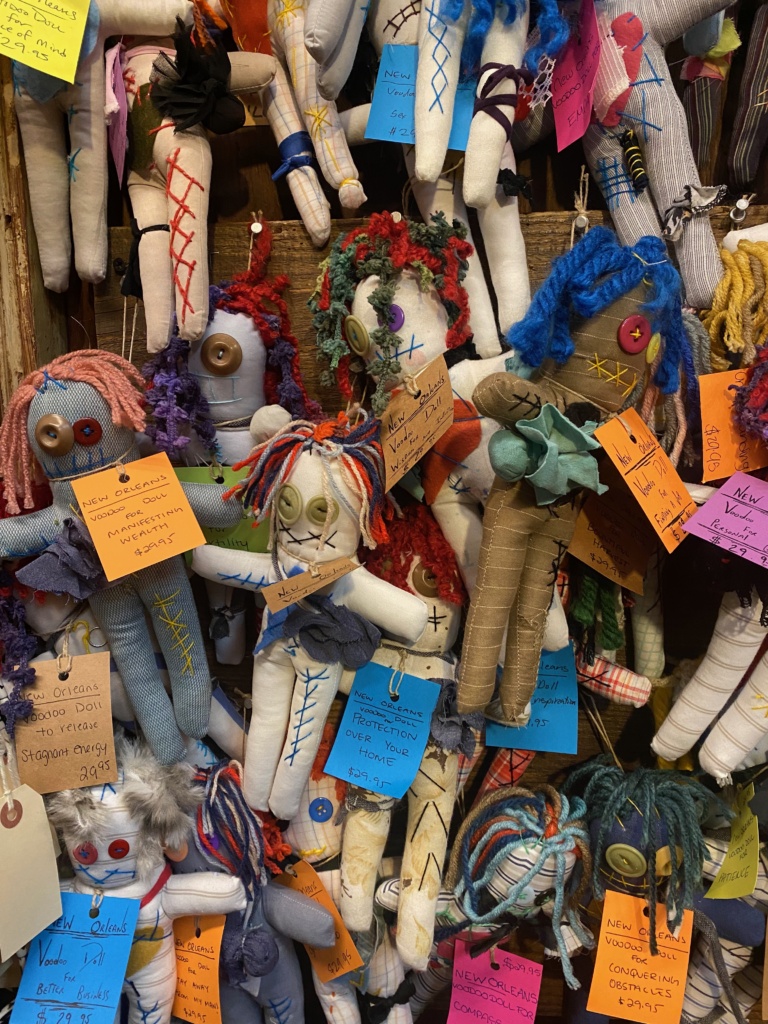
Zombie
The 19th century was the period of the greatest flourishing of voodoo in New Orleans. At that time, numerous priests and priestesses were community leaders, spiritual guides, healers of both soul and body, and, when needed, intermediaries in communication with the afterlife, through which they could plead with spirits for help. They ran businesses and accumulated wealth. They had influence not only among slaves and free people of color, but also among white businessmen and politicians. Operating on the border between both worlds, they became rich and gained power. They sold amulets, cast spells, predicted the future, healed, gave advice, performed rituals, and charged high fees for these services. They also made money by organizing exotic ceremonies, laced with eroticism or horror.
They held dances around the fire, featuring semi-naked or naked women with snakes draped over their shoulders – the snake is an important deity in voodoo. They induced trance states or administered tetrodotoxin (obtained from the innards and eggs of pufferfish), which turned people into zombies. Tetrodotoxin causes symptoms similar to death – the victim is motionless, their heart beats extremely weakly, and their breath becomes undetectable. They appear dead, though remain fully conscious of what is happening around them. The seemingly dead body was then buried in a grave.
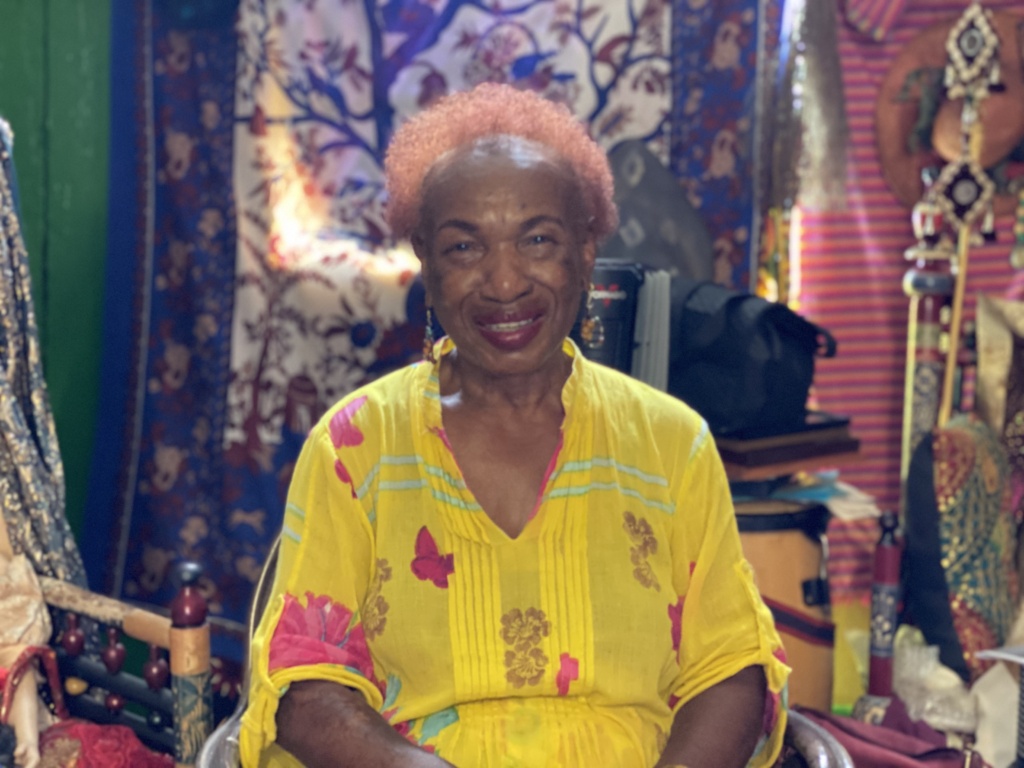
After a few hours, the person would be dug up, as otherwise, the buried individual would suffocate. The priest would then administer an antidote to the victim, which “revived” them. Those treated in this way became submissive to the priest, who could force them, for example, to work without payment. This is how slaves, or zombies, were created. People lost their memory and remained docile, stripped of their identity. The legend says that giving a zombie salt restores their personality and frees them from the control of their tormentor.
Zombification is therefore a physical process, where the victim is simply poisoned. The transformation into a zombie is a psychological process triggered by the psychosis caused by the drug and the trauma of being buried alive and left underground for several hours. Such rituals captured the imagination and contributed to the legend of hoodoo and voodoo.
This is how the figure of the zombie, the living dead, entered mass culture, a concept that Hollywood completely distorted and introduced into global consciousness. Similarly, the famous voodoo dolls became widely known. In voodoo, they are primarily used for healing purposes. Their power increases when the name of the person they represent is placed on them or when an item of their clothing or hair is added. The doll should be kept hidden, as close as possible to the person it represents. In this way, its power grows. In hoodoo, dolls were also used with malicious intent. They were meant to harm, cause illness, or bring bad luck. A doll meant to ward off evil was best hidden under the stairs of the house or in the bedroom, near the intended victim.
Dr John and Marie Laveau — voodoo priests
In 19th-century New Orleans, there lived several famous priests whose legends have survived to this day. One of them was Doctor John, who claimed to come from an aristocratic family in Senegal. This was supposedly evidenced by the rich tattoos he had on his face, reserved for royal family members. He claimed that he was captured by the Spanish and sold as a slave to Cuba. He freed himself by casting a spell on his owner, and after several years of traveling the world as a sailor, he finally settled in New Orleans. He worked as a supervisor at the port. His tattoos and powerful build commanded respect among workers and slaves. He predicted the future by reading bales of cotton stored at the port, earning a reputation as a clairvoyant, priest, and spiritual guide.
His fame spread to wealthy white members of New Orleans society. By the end of the first half of the 19th century, he was one of the richest residents of the city. He had many white people under his control, bribing slaves and gathering secrets about their owners, which he used to blackmail them. He claimed that he gained this knowledge through his visions. He successfully ran a brothel and bought enslaved women whom he used sexually, creating a private harem. He maintained that he was the mentor of Marie Laveau, the most famous priestess in history and the queen of New Orleans voodoo. However, they were more likely rivals, and they were not seen together. Information about her life speaks volumes about New Orleans society.
Marie Laveau was a woman of color with Native American, African, and European roots. She moved between the worlds of shamanism, Christianity, voodoo, hoodoo, and Native American rituals. She could neither read nor write, but despite this, she became extremely influential. After the death of her first husband, a black immigrant who arrived in New Orleans with a wave of refugees during the Haitian Revolution, she formed a relationship with a white man from New Orleans society, with whom she had seven children.
According to the Black Code, they could not be married, but they were allowed to remain in an official partnership. Only two of their children lived to adulthood. Marie was respected in the slums, among slaves, and even in high society. She was a fortune teller, businesswoman, priestess, clairvoyant, and, most importantly, a figure of great charisma. She had at least seven slaves. Yes, free people of color in Louisiana owned slaves.
Marie was accused of blackmail, murder, and every unexplained event in the city was attributed to her actions. However, no crime was ever proven against her. She was famous, and her persona remained shrouded in mystery. Stories about her life are mostly legends passed down through generations. In her lifetime, she prayed both to Catholic saints in the cathedral at Jackson Square and to spirits and voodoo deities in the dark alleys of New Orleans and the lavish residences of the wealthy.
She had a strong influence on the integration of Catholic saints into voodoo, including the popularization of the image of Our Lady of Częstochowa. In Catholic churches, people sought mass, focus, sermons, and confession. Voodoo priests offered the same individuals advice on life matters, performed healing rituals, and cast spells to help clients in personal relationships, employment, or health. White men ruled in churches, while free black women, voodoo priestesses, ruled the streets.
Today, voodoo is practiced in many countries around the world. However, no city in the “Western” world is as strongly associated with this religion as New Orleans. This is due not only to film productions but also the pursuit of profit. Voodoo is a way of making money from the millions of tourists who visit the city each year. There are Voodoo Houses, and every souvenir shop sells dolls and symbols associated with this religion.
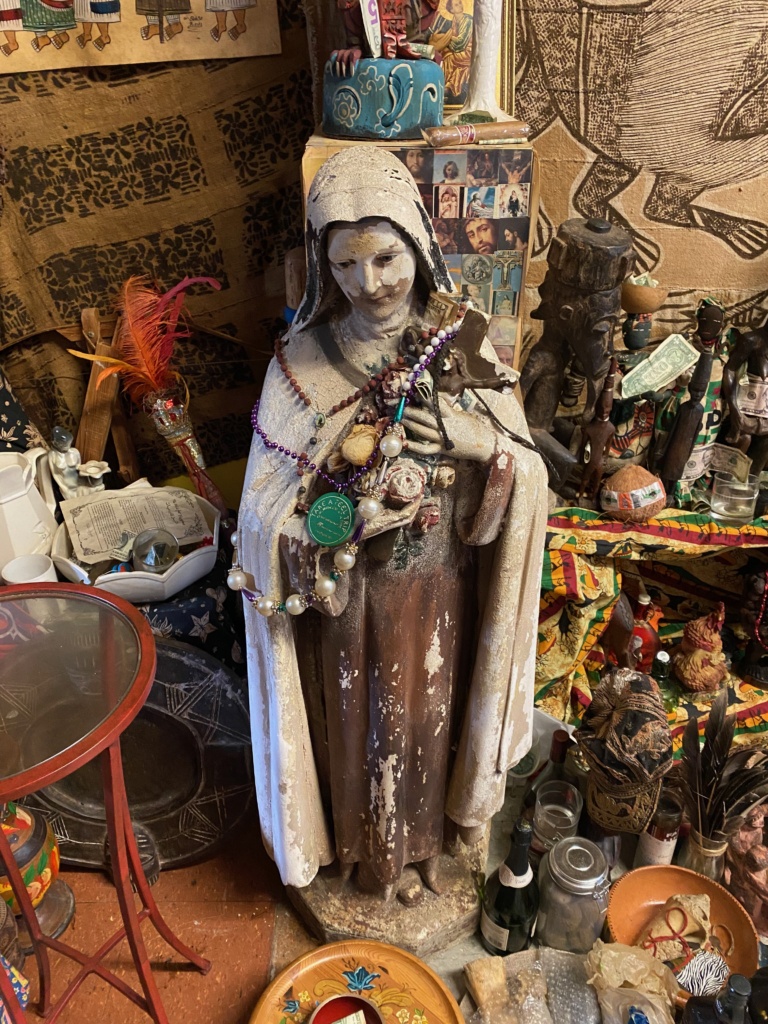
One of the chains of liquor stores was named Voodoo Liquor. Hollywood created the zombie, popularized the dolls, and surrounded this faith with an ominous aura. In the 20th century, almost every Hollywood film touching on this subject portrayed voodoo as black magic, capable of controlling the body and mind of others. It created a trend for “horror” and presented a somewhat unserious vision of a religion that, on one hand, fascinates and intrigues, while on the other, causes unease. Voodoo evokes strong emotions, sparks associations, and Hollywood producers and New Orleans residents have monetized it. While no formal studies have likely been conducted, if one were to tally the revenue from souvenir shops, museum tickets, and liquor stores using voodoo symbolism, it would certainly amount to tens of millions of dollars annually.
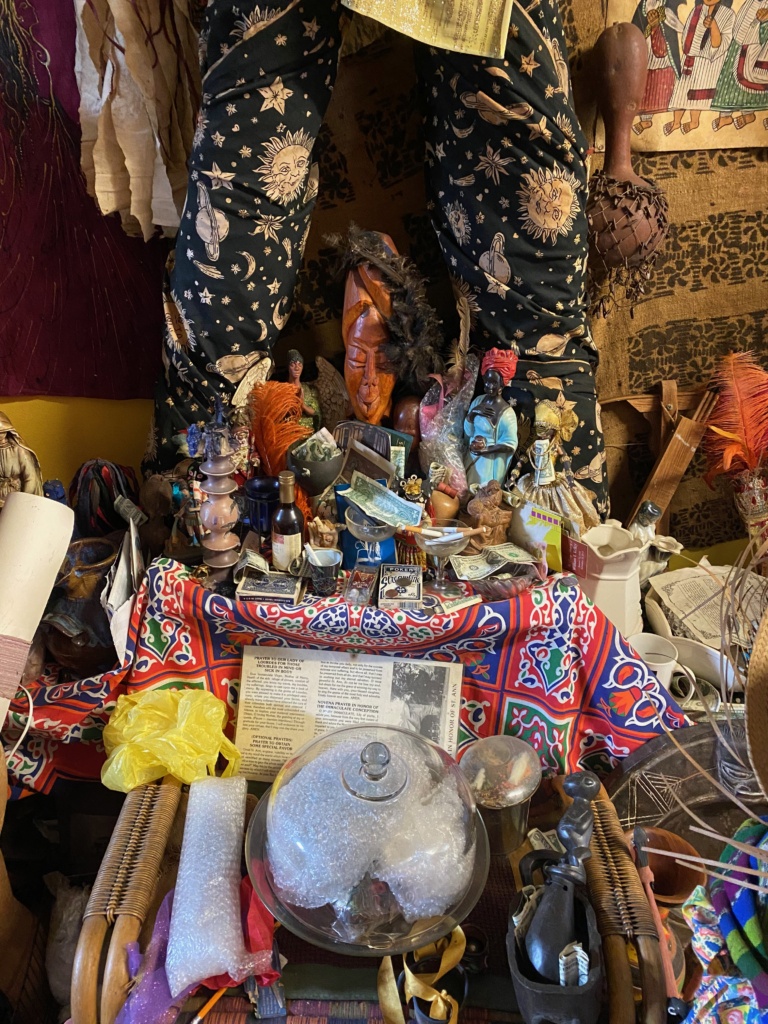
Even tattoo salons profit from this symbolism, decorating tourists with designs of dolls, skulls in top hats, and other emblems featuring snakes. It’s a part of pop culture, like Halloween and Valentine’s Day—holidays stripped of their deeper meanings, symbols of love and the afterlife, all of which are turned into ways to make money. A reason to buy and sell. A shared human celebration that delves into the theme to a level that can be summed up by millions of people worldwide: “because it’s cool, fun, why not?” True voodoo, however, has been for centuries a religion of the home, practiced at one’s own altar in the comfort of their house.
